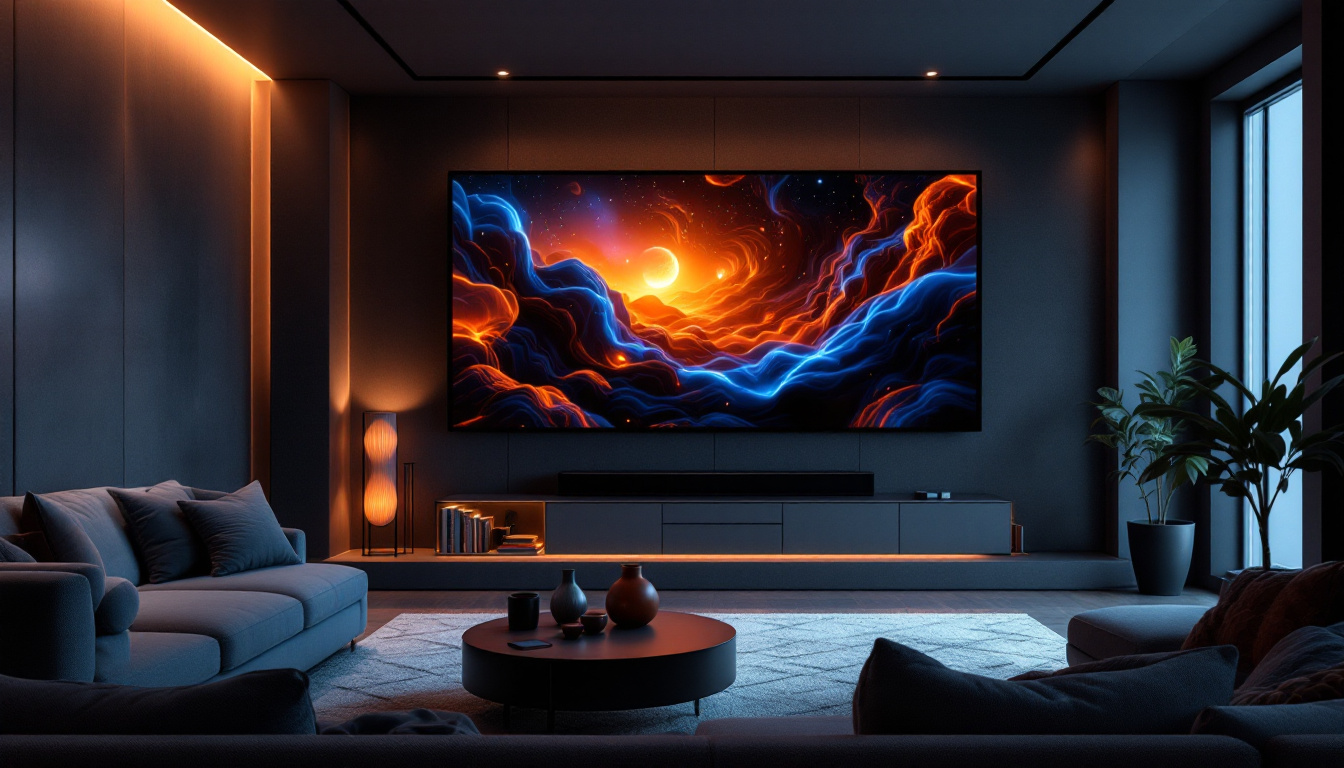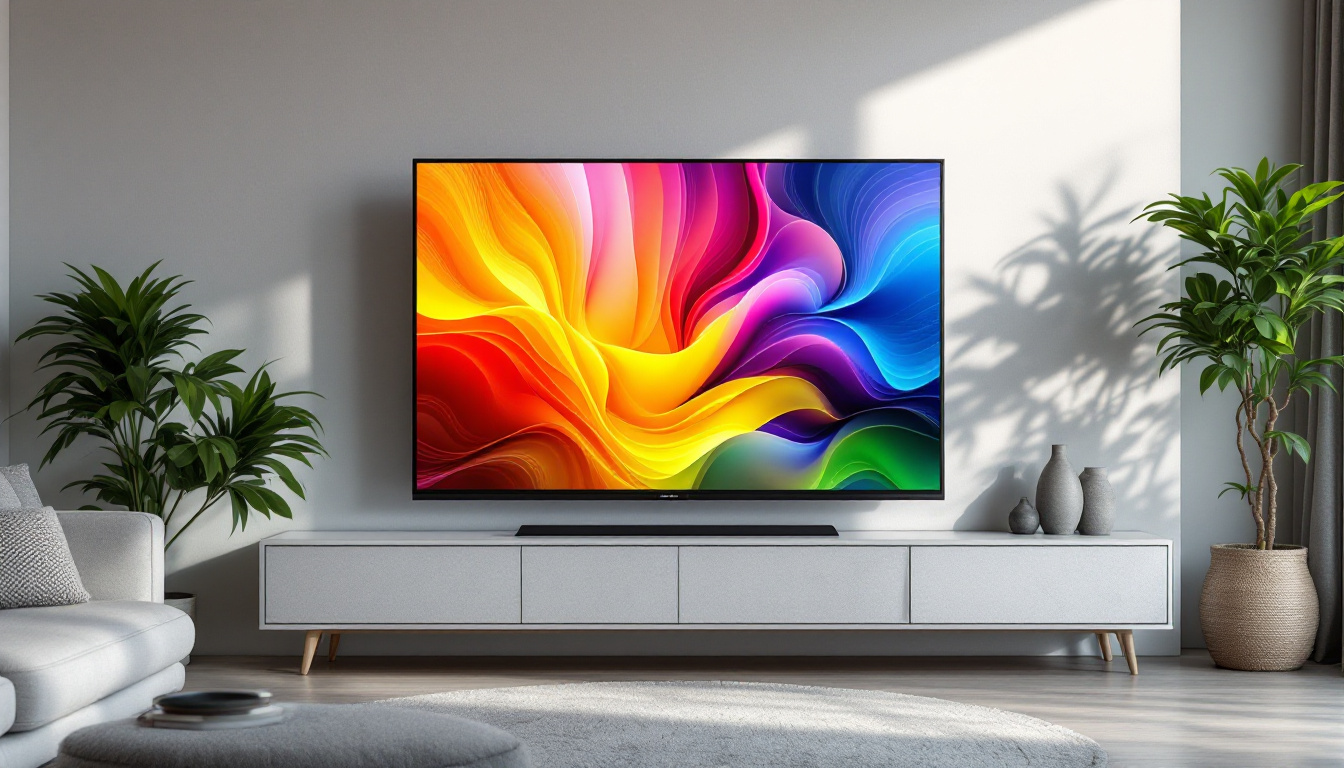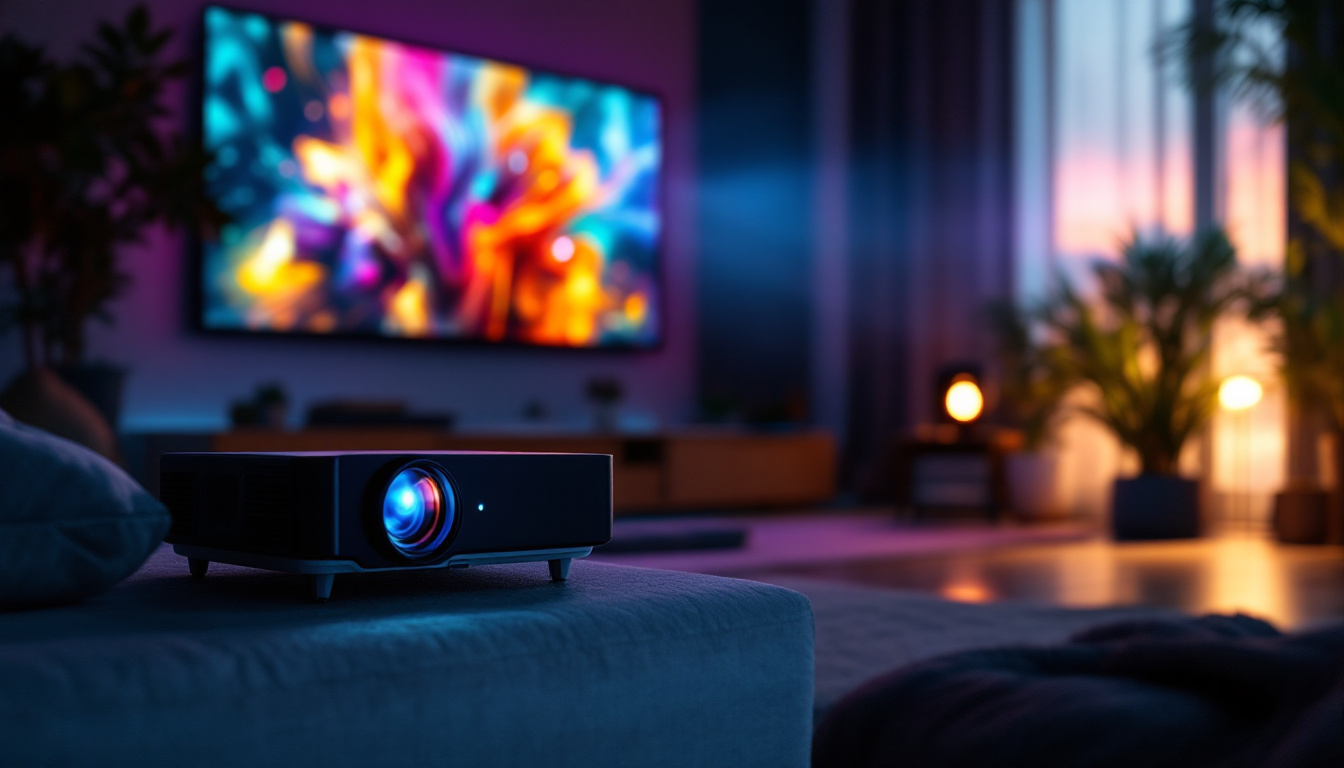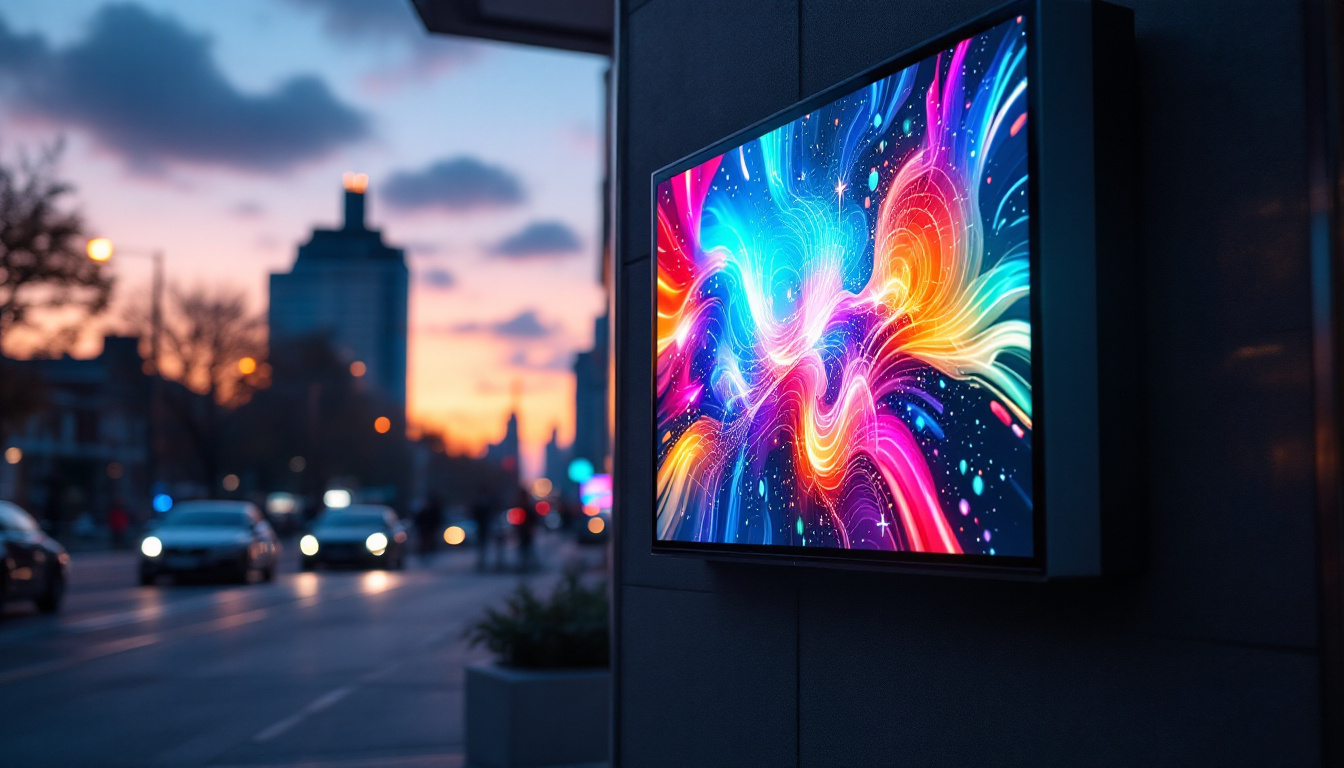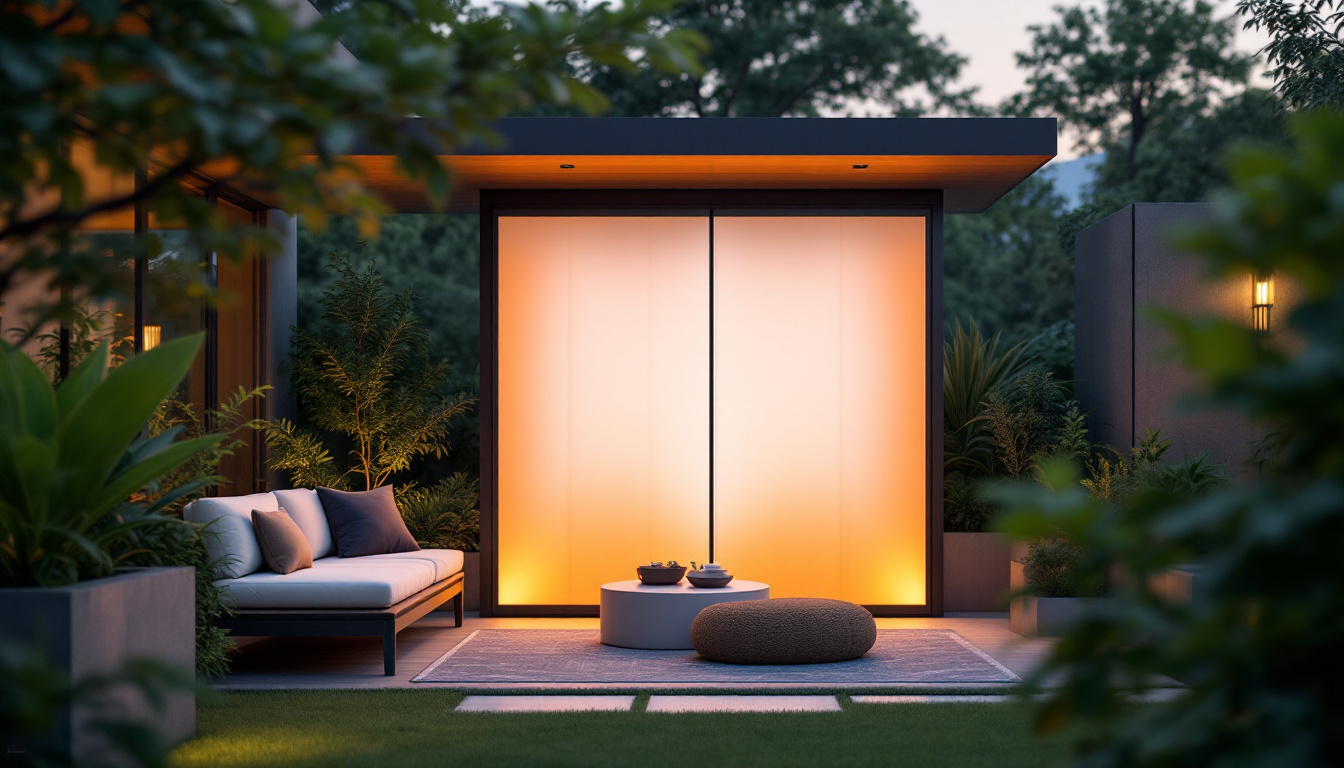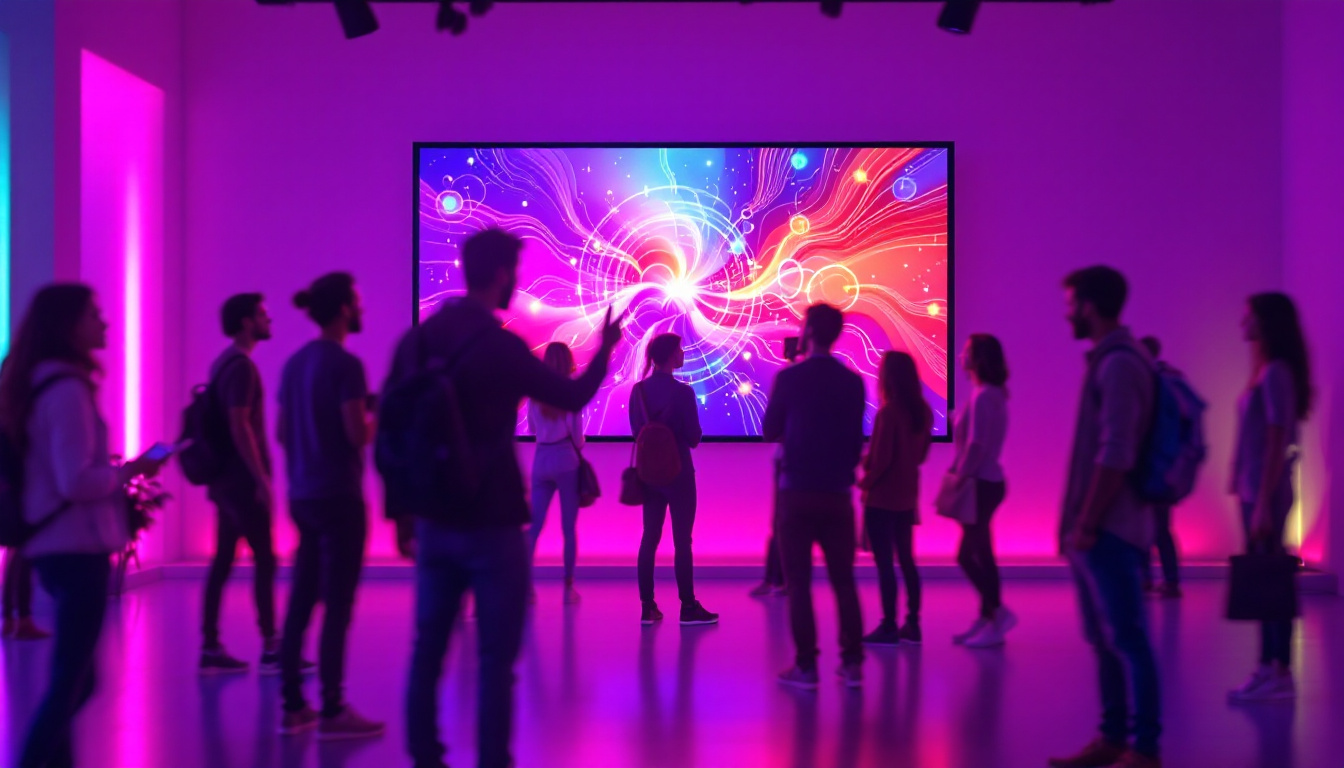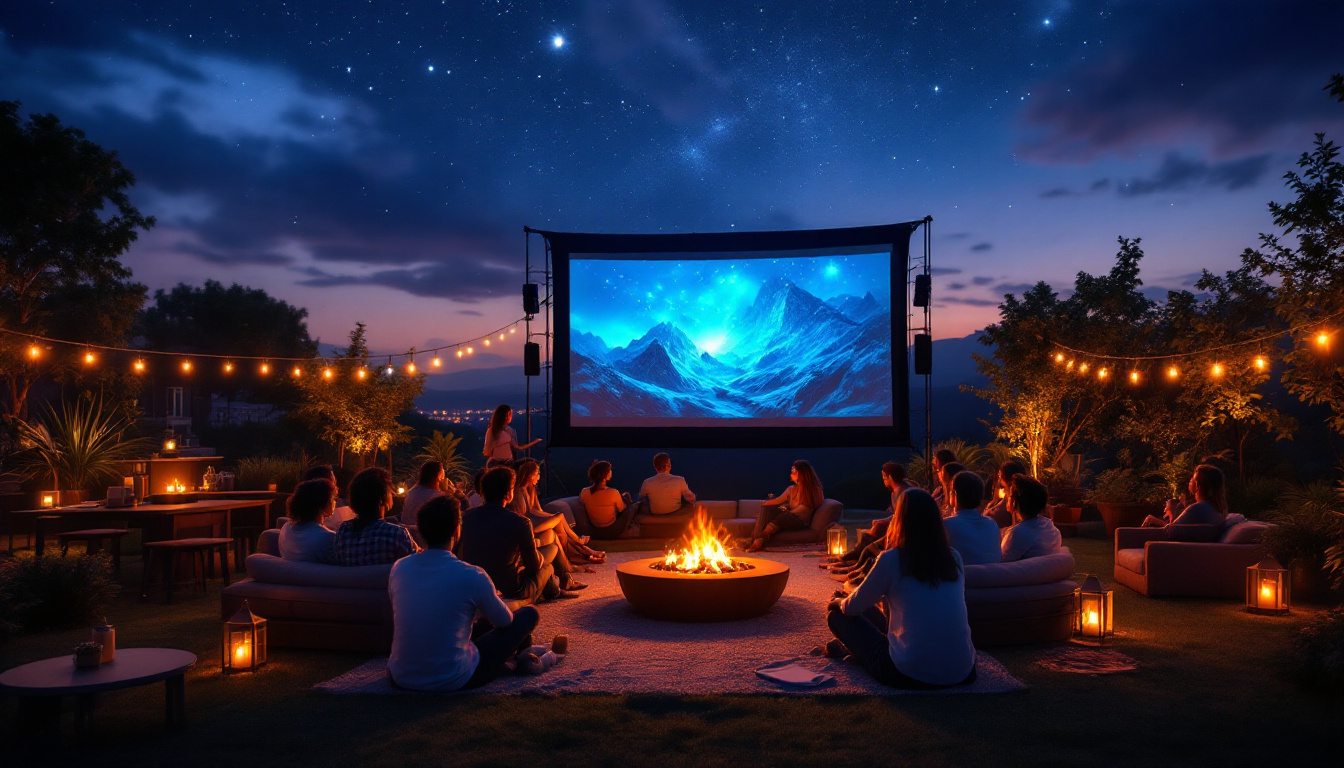Creating the perfect home theater experience involves careful consideration of various components, and the display is arguably one of the most critical elements. Among the various display technologies available, LED displays have gained immense popularity due to their vibrant colors, excellent contrast, and energy efficiency. This article delves into the intricacies of LED displays, particularly in the context of home theater walls, and explores how they can elevate your viewing experience.
Understanding LED Technology
LED, or Light Emitting Diode, technology has revolutionized the way we view content. Unlike traditional display technologies such as LCD or plasma, LED displays utilize a series of tiny diodes to produce light, resulting in a more dynamic and colorful image. This section will explore the fundamentals of LED technology and its advantages.
How LED Displays Work
At the core of LED technology is the principle of electroluminescence, where a semiconductor material emits light when an electric current passes through it. In LED displays, thousands of these diodes are arranged in a grid, with each diode capable of producing different colors. This allows for a wide range of color reproduction and brightness levels, making LED displays particularly suitable for home theaters.
Moreover, LED displays can be categorized into two main types: direct-lit and edge-lit. Direct-lit LED displays have a backlight that spans the entire screen, providing uniform brightness and better contrast. On the other hand, edge-lit displays use LEDs positioned along the edges of the screen, which can lead to thinner designs but may compromise uniformity in brightness.
Advantages of LED Displays
One of the most significant advantages of LED displays is their energy efficiency. Compared to traditional displays, LED screens consume less power, making them an environmentally friendly choice. Additionally, they tend to have longer lifespans, reducing the need for frequent replacements.
Another notable benefit is their superior brightness and contrast levels. LED displays can achieve higher brightness levels than many other technologies, making them ideal for rooms with ambient light. This characteristic is particularly advantageous for home theaters, where viewers often want to enjoy movies and shows without straining their eyes.
Choosing the Right LED Display for Your Home Theater
Selecting the ideal LED display for a home theater involves several factors, including size, resolution, and additional features. Understanding these elements can help ensure that the chosen display meets the specific needs of the viewing environment.
Size Matters
The size of the LED display is one of the most critical considerations when designing a home theater. A screen that is too small may not provide an immersive experience, while one that is too large can overwhelm the space. A general guideline is to consider the distance from the seating area to the screen. For instance, a 65-inch screen is typically suitable for a viewing distance of around 8 to 10 feet.
Additionally, the layout of the room should be taken into account. A larger screen may be appropriate for a dedicated home theater room, while a smaller display may be more suitable for a multi-purpose living area. Ultimately, the goal is to create a comfortable viewing experience that enhances the overall enjoyment of movies and shows.
Resolution and Picture Quality
Resolution plays a crucial role in determining the picture quality of an LED display. The most common resolutions available are Full HD (1920×1080), 4K Ultra HD (3840×2160), and 8K Ultra HD (7680×4320). While Full HD is still widely used, 4K has become the standard for modern home theaters due to its ability to deliver stunning detail and clarity.
For those seeking the ultimate in picture quality, 8K displays are now entering the market. However, it’s essential to consider the availability of 8K content, as it is still relatively limited. Therefore, for most home theater setups, a 4K LED display strikes an excellent balance between quality and content availability.
Installation Considerations
Once the right LED display has been selected, the next step is installation. Proper installation is crucial for achieving the best viewing experience and ensuring the longevity of the display. This section will cover key aspects of installation, including mounting options and cable management.
Mounting Options
There are several ways to mount an LED display in a home theater. Wall mounting is a popular choice, as it saves space and provides a clean, modern look. When wall mounting, it’s essential to use a sturdy mount that can support the weight of the display and is compatible with its size.
Alternatively, a TV stand or media console can be used to support the display. This option allows for easier access to cables and devices but may take up more floor space. Regardless of the chosen method, ensuring that the display is at eye level when seated is vital for comfort and enjoyment.
Cable Management
Effective cable management is often overlooked but is crucial for maintaining a tidy and organized home theater. Excess cables can create a cluttered appearance and may even pose safety hazards. Utilizing cable management solutions, such as cable covers or conduits, can help keep wires hidden and organized.
Additionally, considering wireless options for devices such as streaming boxes or sound systems can further reduce cable clutter. Many modern devices offer wireless connectivity, allowing for a cleaner installation without sacrificing performance.
Enhancing Your Home Theater Experience
While an LED display is a significant component of a home theater, several other elements can enhance the overall experience. This section will explore audio systems, seating arrangements, and lighting options that complement the LED display.
Audio Systems
Sound quality is just as important as picture quality in a home theater. An immersive audio experience can significantly enhance the enjoyment of movies and shows. Investing in a high-quality sound system, such as a surround sound setup or a soundbar, can create a more engaging atmosphere.
Surround sound systems typically include multiple speakers strategically placed around the room to create a three-dimensional audio experience. On the other hand, soundbars offer a more compact solution while still delivering impressive sound quality. Regardless of the choice, ensuring that the audio system is compatible with the LED display is essential for optimal performance.
Seating Arrangements
The seating arrangement in a home theater can greatly influence the viewing experience. Comfortable seating is crucial for long movie marathons, and the arrangement should allow for an unobstructed view of the screen from all seats. Consider using tiered seating or recliners to enhance comfort and visibility.
Additionally, incorporating features such as cup holders and built-in storage can add to the convenience and enjoyment of the space. Ultimately, the goal is to create a cozy and inviting atmosphere that encourages relaxation and enjoyment.
Lighting Options
Lighting plays a vital role in setting the mood for a home theater. The right lighting can enhance the viewing experience while also contributing to the overall aesthetics of the room. Dimmable lights are an excellent choice, as they allow for flexibility in adjusting brightness levels based on the content being viewed.
Additionally, consider incorporating LED strip lights or sconces to provide ambient lighting without causing glare on the screen. This can create a cinematic atmosphere that enhances the overall experience. Furthermore, blackout curtains can help control natural light, ensuring that the picture quality remains unaffected during daytime viewing.
Future Trends in LED Displays
The world of LED displays is continually evolving, with new technologies and trends emerging regularly. Staying informed about these developments can help home theater enthusiasts make well-informed decisions regarding their setups.
MicroLED Technology
One of the most exciting advancements in LED technology is MicroLED. This innovative technology utilizes microscopic LEDs to create individual pixels, resulting in exceptional brightness, contrast, and color accuracy. MicroLED displays offer the potential for even larger screens without sacrificing picture quality, making them an appealing option for future home theaters.
Additionally, MicroLED displays are modular, allowing users to customize the size and shape of their screens. This flexibility opens up new possibilities for unique home theater designs that can be tailored to individual preferences and spaces.
Smart Features and Integration
As technology continues to advance, smart features are becoming increasingly prevalent in LED displays. Many modern displays come equipped with built-in streaming capabilities, voice control, and compatibility with smart home systems. These features can enhance convenience and accessibility, allowing users to enjoy their favorite content with ease.
Furthermore, integration with other devices, such as smart speakers and home automation systems, can create a seamless entertainment experience. This level of connectivity is becoming a standard expectation for home theater setups, making it essential to consider when selecting an LED display.
Conclusion
In conclusion, LED displays have transformed the home theater experience, offering vibrant colors, excellent contrast, and energy efficiency. By understanding the fundamentals of LED technology and considering factors such as size, resolution, and installation, homeowners can create a stunning viewing environment that enhances their entertainment experience.
Additionally, incorporating quality audio systems, comfortable seating, and effective lighting can further elevate the home theater experience. As technology continues to evolve, staying informed about emerging trends, such as MicroLED and smart features, will ensure that your home theater remains at the forefront of innovation.
Ultimately, the goal is to create a space that not only provides exceptional picture quality but also fosters enjoyment and relaxation for all who enter. With careful planning and consideration, a home theater wall featuring an LED display can become the centerpiece of entertainment in any home.
Discover the Future of Home Theater with LumenMatrix
Ready to transform your home entertainment experience with the latest in LED display technology? Look no further than LumenMatrix, a pioneer in creating immersive visual experiences that bring your content to life. From the comfort of your living room to the expanse of your backyard, our diverse range of LED display solutions, including Indoor and Outdoor LED Wall Displays, Vehicle LED Displays, and more, are designed to exceed your expectations. Elevate your home theater with our cutting-edge displays that promise unparalleled brightness, contrast, and energy efficiency. Check out LumenMatrix LED Display Solutions today and step into a world where every viewing experience is a masterpiece of clarity and vibrancy.

